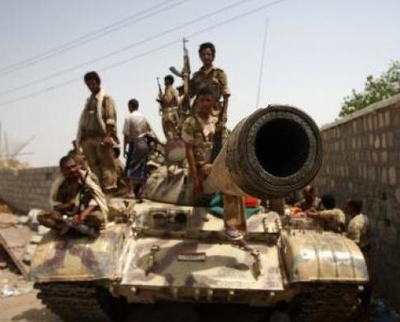Yemeni forces have launched a new offensive against al-Qaeda in the Arabian Peninsula (AQAP) intended to eliminate the group from Shabwa and Abyan provinces of southern Yemen. Government forces backed by local militias and tribal leaders have killed nearly 60 al-Qaeda fighters according to local military officials.
AQAP used to control cities in Abyan province, but a 2012 offensive expelled them from the major urban centers into more rugged mountain areas of the Mahfad region. Last week the U.S. responded with an aerial assault on AQAP in the Mahfad region killing at least 55 militants and three Yemeni soldiers. The drone strikes lasted for several hours, taking out three prominent commanders and disabling the infrastructure of a major al-Qaeda base. Government sources suggest that bomb-maker Ibrahim al-Asiri, responsible for the “underwear bomber” in 2009, died in the attack. Reports also indicate that the drone was part of the CIA program, not the military, and that there were three civilian casualties. All such reports should be viewed with some skepticism.

Yemeni soldiers sit on a tank at their base in the city of Jaar, in the southern Abyan province, on June 15, 2012. (AFP) |
The United States views AQAP as one of the best organized and most dangerous al-Qaeda affiliates. On April 16, AQAP held a meeting where the terrorist organizations leader, Nasir al-Wuhayshi, was out in the open greeting hundreds of fighters. Intelligence analysts say their defiant actions shows that AQAP is emboldened and that smaller al-Qaeda affiliates are consolidating to form a bigger and better organized threat.
U.S. officials claim that the drone strikes have weakened AQAP; the group controlled significantly more of Yemen’s territory in 2011. However, the national army and other local forces on the ground will have to maintain their high state of alert, otherwise AQAP could regain strength and threaten U.S. allies and interests throughout the region.

